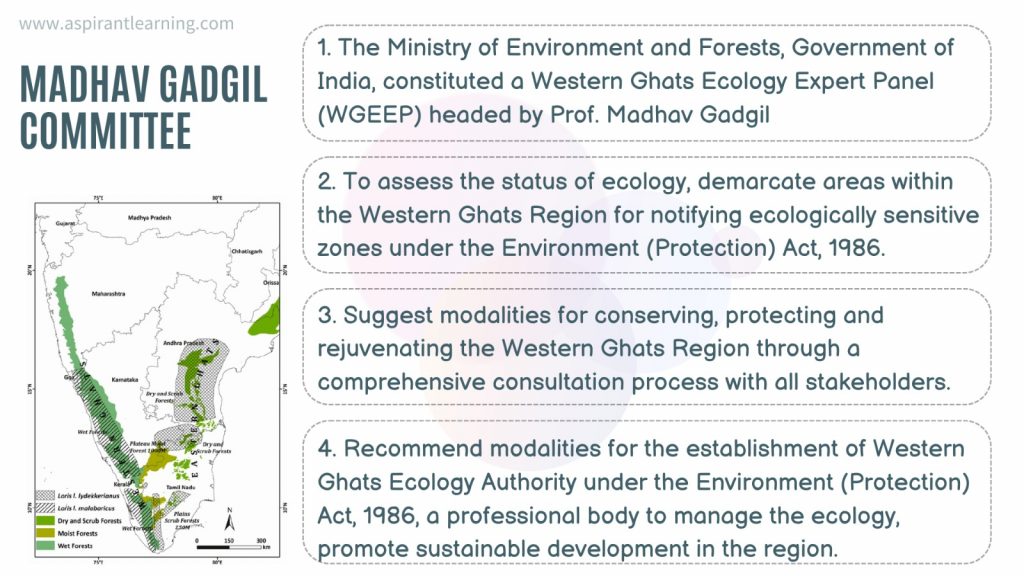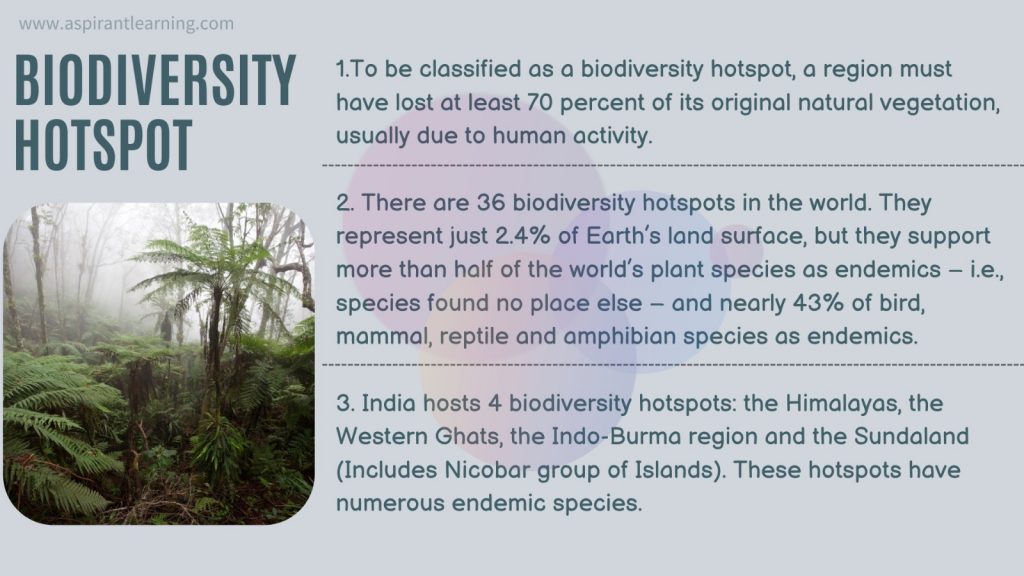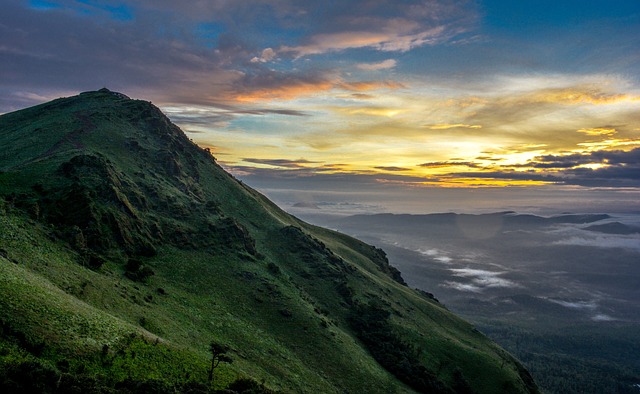News Highlights:
- Recently, The Supreme Court directed the Environment Ministry to file its counter-affidavit to a petition filed by a minor, who is a resident of Nilgiris, seeking judicial intervention to protect the Western Ghats from destruction.
- Several environmental activists and NGOs across six Western Ghats States have joined hands to seek judicial intervention to re-instate the recommendations of the Dr Madhav Gadgil-headed Western Ghats Ecology Expert Panel’s report.

Western Ghats:
- About:
- The Western Ghats, also known as the Sahyadri Hills, are well known for their rich and unique assemblage of flora and fauna.
- The range is called Sahyadri in northern Maharashtra and Sahya Parvatham in Kerala.
- The northern portion of the narrow coastal plain between the Western Ghats and the Arabian Sea is known as the Konkan Coast.
- The central portion is called Kanara, and the southern portion is called the Malabar region or the Malabar Coast.
- The foothill region east of the Ghats in Maharashtra is known as Desh, while the eastern foothills of central Karnataka state are known as Malanadu.
- In the south, the range is known as the Nilgiri malai in Tamil Nadu.
- It is recognised as a UNESCO World Heritage Site.
- It is one of the world’s eight hotspots of biological diversity due to its high biological diversity and endemism level.
- Geology of Western Ghats:
- The mountains of the Western Ghats are Block Mountains formed due to the down warping of a part of the land into the Arabian Sea.
- The mountains of the Western Ghats are not true mountains but are the faulted edge of the Deccan Plateau.
- Major rocks found in the region include Basalt, charnockite, granite gneiss, chondrites, leptynite, and metamorphic gneisses with detached occurrences of crystalline limestone, iron ore, dolerites and anorthosites.
- Threats to the Western Ghats:
- Mining activities,
- Extraction of Forest Produce,
- Livestock Grazing,
- Human-wildlife Conflict,
- Hunting
- Encroachment by Human Settlements,
- Hydropower Projects
- Deforestation
- Climate Change
Topography of Western Ghats:
- Climate of Western Ghats:
- Due to the mountains’ ability to obstruct rain-bringing westerly monsoon winds, the western side of the Western Ghats receives more rainfall than its eastern side. It, therefore, has a significant impact on the pattern and intensity of India’s monsoonal rainfall.
- The dense forests also contribute to high orographic precipitation. The climate is humid and tropical in the lower reaches, tempered by the proximity to the sea.
- Elevations of 1,500 m and above in the north and 2,000 m and above in the south have a more temperate climate.
- Here, the yearly average temperature is close to 15 °C. Some regions frequently get frost, and winter temperatures are below freezing. 20 °C in the south to 24 °C in the north are the average temperatures. Additionally, it has been shown that the South Western Ghats’ coldest and wettest seasons are related.
- During the monsoon season between June and September, the unbroken Western Ghats chain is a barrier to the moisture-laden clouds. The heavy, eastward-moving rain-bearing clouds are forced to rise and, in the process, deposit most of their rain on the windward side. Rainfall in this region averages 3,000–4,000 mm.
- The eastern region of the mountain region, which lies in the rain shadow, receives far less rainfall averaging about 1,000 mm bringing the average rainfall figure to 2,500 mm.
- Rivers:
- West flowing: The rivers that originate in the Western Ghats and flow towards the west are Periyar, Bharathappuzha, Netravati, Sharavathi, Mandovi etc.
- The west-flowing rivers of Western Ghats are fast-moving, owing to the short distance travelled and steeper gradient.
- This makes the Western Ghats more useful in terms of the production of hydroelectricity. The steep
- East flowing: The rivers originating in the Western Ghats and flowing towards the east include three significant rivers. Godavari, Krishna and Kaveri, and many smaller/tributary rivers such as Tunga, Bhadra, Bhima, Malaprabha, Ghataprabha, Hemavathi, and Kabini.
- These east-flowing rivers are comparatively slower moving and eventually merge into larger rivers such as the Kaveri and Krishna.
- Wildlife:
- The Nilgiri marten, brown palm civet, stripe-necked mongoose, Indian brown mongoose, small Indian civet and leopard cat are the small carnivores living in the forests of the Western Ghats.
- Many species, such as the Nilgiri tahr (Hemitragus hypocrisy) and the lion-tailed macaque (Macaca silenus), are endemic.
- At least 325 globally threatened (IUCN Red Data List) species occur in the Western Ghats.
- The globally threatened flora and fauna in the Western Ghats are represented by 229 plant species, 31 mammal species, 15 bird species, 43 amphibian species, 5 reptile species and 1 fish species.
- Protected Areas:
- Western Ghats is home to India’s two biosphere reserves, 13 National parks, several wildlife sanctuaries and many Reserve Forests.
- The Nilgiri Biosphere Reserve forms the largest contiguous protected area in the Western Ghats.
- It comprised the evergreen forests of Nagarahole, deciduous forests of Bandipur National Park and Nugu in Karnataka and adjoining regions of Wayanad and Mudumalai National Park in the states of Kerala and Tamil Nadu.
- The Silent Valley National Park in Kerala is among India’s last tracts of virgin tropical evergreen forest.

Significance of Western Ghats:
- Climate:
- The mountains of the Western Ghats influence the Indian monsoon weather patterns.
- The Ghats act as a critical barrier, intercepting the rain-laden monsoon winds that blow from the southwest during late summer.
- It functions in the sequestration of atmospheric CO2 and has a vital role in climate change.
- It is estimated that they neutralise around 4 million tonnes of carbon every year
- Biodiversity:
- the Western Ghats, along with its geographical extension in the wet zone of Sri Lanka, are now also considered one of the eight‚ hottest hotspots‛ of biodiversity
- The Western Ghats contain exceptional levels of plant and animal diversity and endemicity.
- Indigenous Tribes:
- The indigenous people of the Western Ghats, including the Particularly Vulnerable Tribal Groups, constitute 44.2% of the tribal population of 6.95% of Karnataka.
- Tourism and Pilgrimage Centre:
- Several tourist centres have sprung up in the Western Ghats; for example, Ooty, Thekkady WS etc.
- There have been important pilgrimage centres in the region- prominent amongst these being Sabarimalai in Kerala, Madeveshwaramalai in Karnataka and Mahabaleshwar in Maharashtra.
- Drainage basin:
- The Western Ghats feeds many perennial rivers of peninsular India, including the three major eastward-flowing rivers Godavari, Krishna, and Kaveri.
- The peninsular Indian states receive most of their water supply from rivers originating in the Western Ghats.
Pic Courtesy: Pixabay
Content Source: The Hindu



